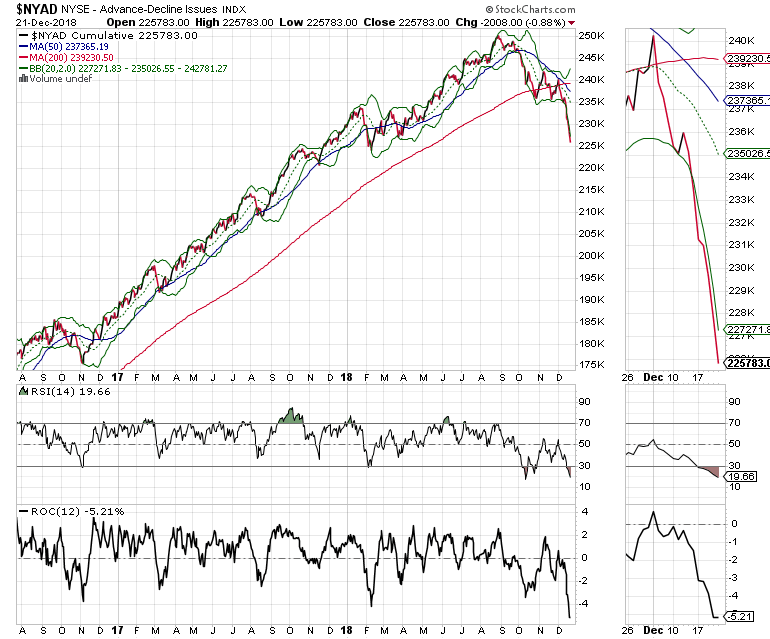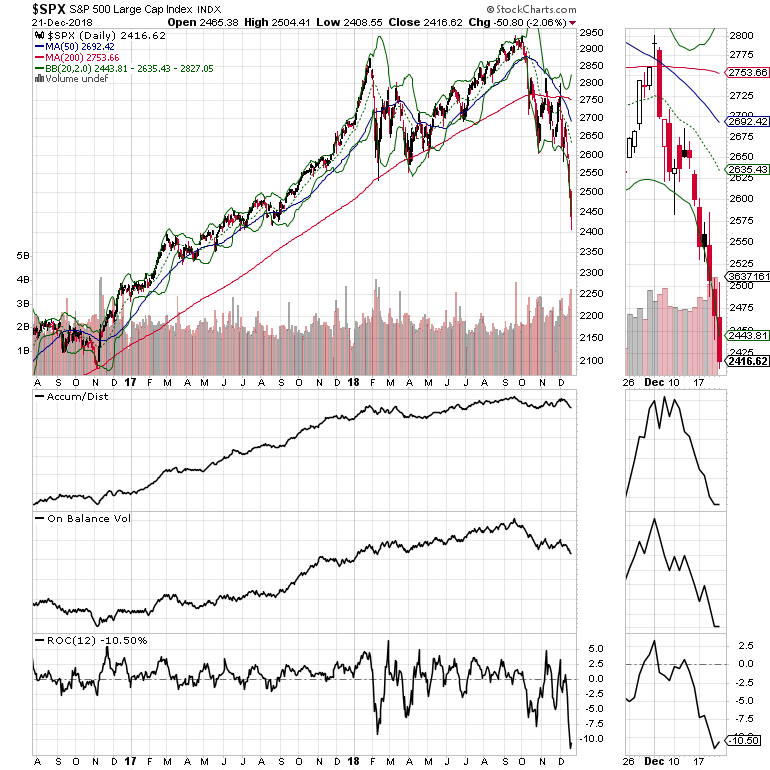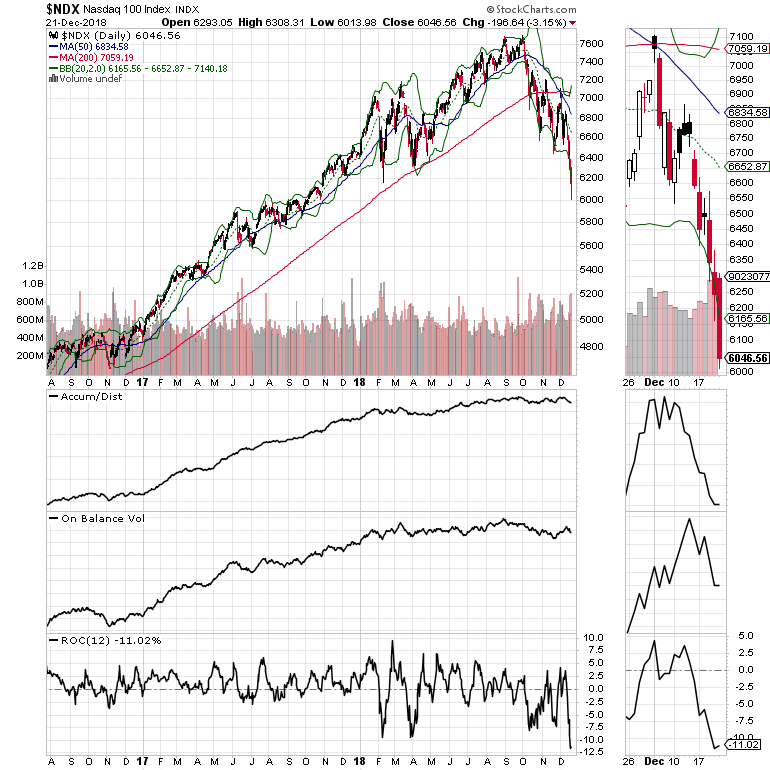One of the most poignant lines in Mel Brooks’ “Spaceballs, the Movie” which coincidentally was released in June 1987, roughly four months before the stock market crashed, is “there is an upside and a downside to every Schwartz,” writes Dr. Joe Duarte Sunday.
Adapting the Schwartz to the current market, it’s easy to see that in the present things are crashing and burning. But if we look further out, crashing stocks are bargains in the making. Thus, as we wait for the dust to clear in the safety of cash and some sparse shorts, we can consider the present and what may lie ahead.
Last week, I wrote on MoneyShow.com, “The stock market may already be broken, given the nearly complete collapse of the market’s breadth on December 14. Consequently, with the Federal Reserve likely to increase interest rates on December 19, 2018, the stage is set for an even more explosive move in the markets.”
I then added: “Quantum physicists describe a three-tiered system of laws that govern the universe based on Chaos Theory where the normal state of affairs is a state of non-linear order described as being predictably unpredictable. When things fall out of this normal state of Chaos, they transition, often violently, into Disorder, which triggers a mechanism known as Complexity. It is Complexity that eventually returns situations into Chaos, although the new state of non- linearity that follows a state of Complexity may or may not resemble past periods of Chaos. More specifically, at the point when Chaos falls into Disorder, it is said that events fall off of the edge of Chaos.”
Of course, the nearly 10% drop in the S&P 500 (SPX) over the last week, and the entry of the Nasdaq Composite (NDX) and the Russell 2000 indexes (RUT) into a full-blown bear market as the rest of the indexes circle the drain confirm that we are well into the Disorder cycle.
Thus, it’s plain to see that the stock market and America’s pocketbook are fading rapidly thanks to the Federal Reserve, Congress, the White House and the algos. This, of course, makes Monday’s trading session, ironically Christmas Eve, one which will potentially be remembered, whether there is a momentous crash or something else.
NYAD disintegrates
The stock market’s most accurate indicator since the 2016 presidential election, the New York Stock Exchange Advance Decline line (NYAD) has been destroyed by the recent selling spree and shows no sign of any meaningful reversal at this point.

Furthermore, since NYAD is primarily a measure of the market’s liquidity, unless and until its current state is credibly reversed, the risks of a major liquidity event, think Lehman Brothers, are on the rise.

Both the Nasdaq 100 and the S&P 500 closed below their lower Bollinger Bands on 12/21. Thus, a bounce is likely at any time.
But just because they bounce it doesn’t mean this is over. If the bounce fades the selling will increase and we could see another 5-10% to the down side in a hurry as the algos pile on.
John Bollinger: how to use Bollinger Bands, in a short MoneyShow.com video.

However, if stocks continue to collapse and other markets such as bonds, commodities and currencies join the collapse, it is at that moment that the liquidity bomb is likely to explode and all bets are off.
It’s a bad time to be in charge
In the real world, the Fed will get the blame for the market’s crash and for the potential damage done to the economy when Mr. and Mrs. America look at the 401-k statements at the end of the year just in time for the Christmas credit card bills to arrive.
But the Fed won’t be alone in receiving blame. Certainly, the presence of trading algorithms and the speed with which they unleash buy and sell programs which in turn feed on one another and extend the prevailing trend, up or down.
It is this high frequency trading and the one sidedness that results from the self-perpetuated automated selling that compounds the up trends, as we saw over the last nine years, and the selling sprees such as the current bear market. “There is an upside and a downside to every Schwartz.”
The Thelma and Louise moment
Finally, there is the evolving psychology of the Thelma and Louise moment just as the iconic T-bird convertible hits the edge of the Grand Canyon and the women are about to hit the gas pedal. This is when fear fades, reality dawns and helplessness sets in just as everyone decides to sell all at once creating a liquidity trap and a potential collapse of the market’s structure.
From a trading standpoint, there is nowhere to be but cash with an occasional stab at the short side via options and inverse ETFs.
If the market crashes into oblivion it will be a great opportunity to cover all shorts. Furthermore, when a bounce materializes it’s good to be skeptical and if one chooses to trade it keep a short leash on the position with tight stops.
Ultimately, this could be a good time to alternate between reading a book and compiling a trading list, instead of trading. Certainly, the fish are biting somewhere.
May the Schwartz be with you.
Joe Duarte has been an active trader and widely recognized stock market analyst since 1987. He is author of Trading Options for Dummies, rated a TOP Options Book for 2018 by Benzinga.com - now in its third edition, The Everything Investing in your 20s and 30s and six other trading books.
To receive Joe’s exclusive stock, option, and ETF recommendations in your mailbox every week visit here.





















